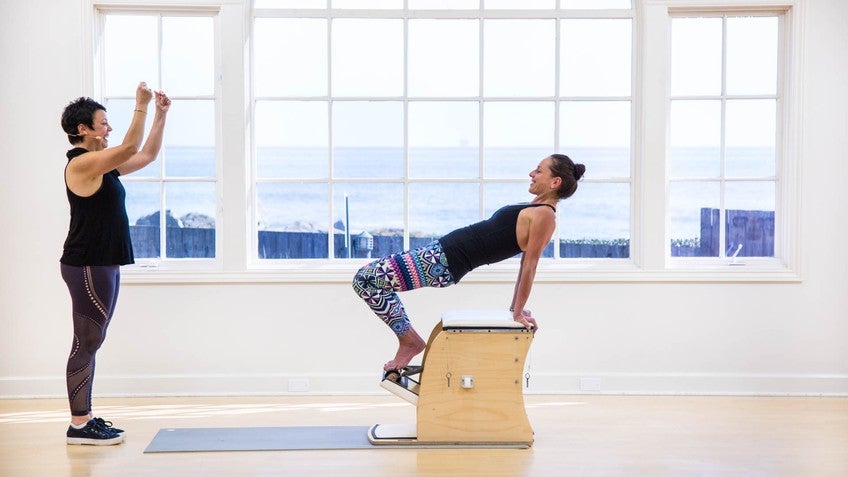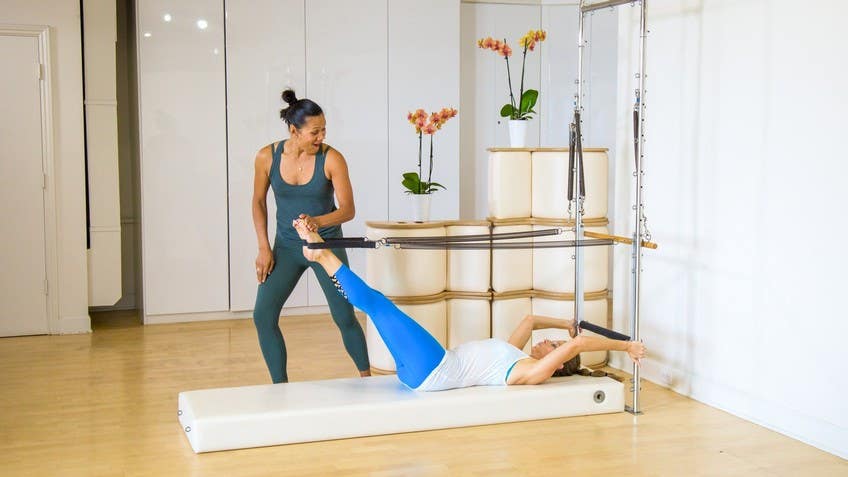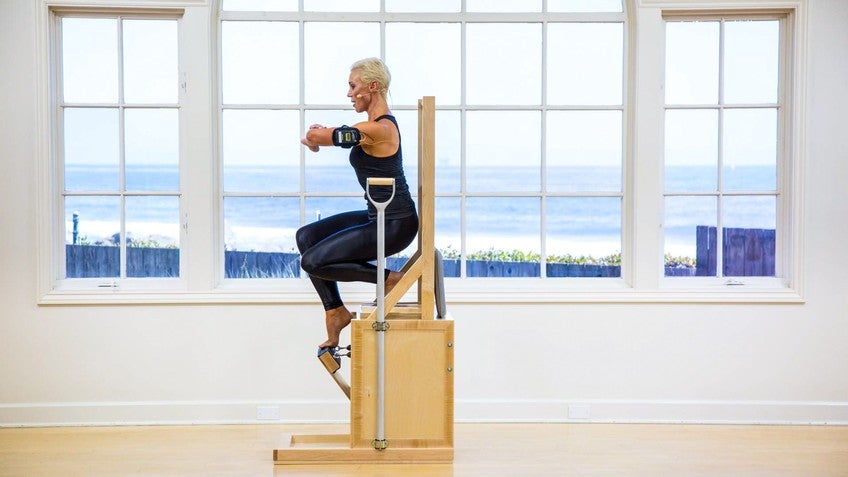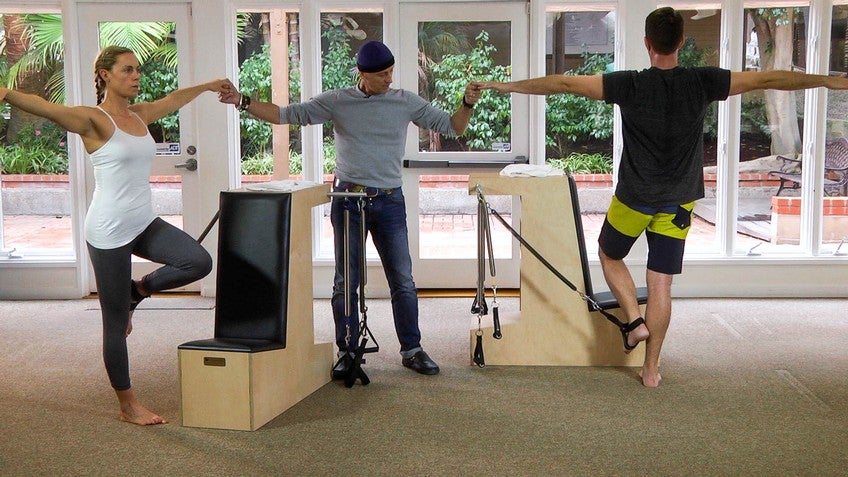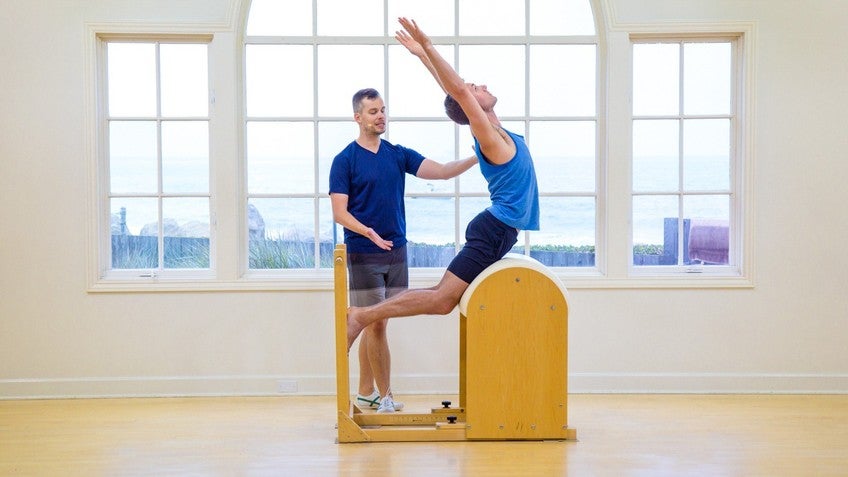A Bit of Pilates Equipment History
If you’ve been to a Pilates studio, you’ve likely been introduced to the most common apparatus, otherwise known as the Pilates Reformer. Most recently, often wrongly called "Pilates machine". Nowadays, it might seem as though Pilates Mat exercises play second fiddle to the Reformer, but it's actually the other way around.
In fact, Joseph Pilates, the inventor of the Controllogy method that was later named after him, started with the Mat repertoire first. These exercises served as the foundation for his entire method. That doesn't mean the apparatus and the accompanying exercises are any less important, though. After all, the equipment serves as stepping stones, with the ultimate goal of getting the body ready for the Mat exercises. Think of the apparatus as a vital part of your Pilates toolkit.
After German-born Joe Pilates emigrated to the U.S. in 1926, he filed the first patent for what he dubbed The Universal Reformer. Being the innovator that he was, it wasn’t long before Joe invented more equipment for his Controllogy exercise method, such as the Cadillac, Wunda Chair, and Guillotine, and used them at his studio in New York City.
With the exception of the Barrels, Joe designed the apparatus to operate with spring-based resistance, to simultaneously deliver support and challenge to the body as it moves through the exercises.
Get to Know Your Pilates Equipment
Fast-forward to today, when we have access to a handful of reputable manufacturers of Pilates equipment worldwide. While there are those that aim to stay as true as possible to Joe’s original, "classical" designs, others have chosen to put a more modern spin on their Pilates equipment. These “contemporary” versions feature new materials (wood and aircraft-grade aluminum in place of iron, for example) and features that offer increased adjustability and versatility via technological upgrades. Both “camps” have their merits, and it all boils down to choosing the one that best suits your needs or preferences.
What Equipment is Needed for Pilates?
Although you might be familiar with Pilates equipment like the Reformer, Cadillac and Wunda Chair, which are staples in most Pilates studios today, there are a handful of other types of apparatus, each with unique, specific purposes. The various pieces are meant to be complementary, with each playing an integral role in the Pilates system. In case you had wondered; apparatus is the preferred term for Pilates professionals.
Pilates Equipment Glossary
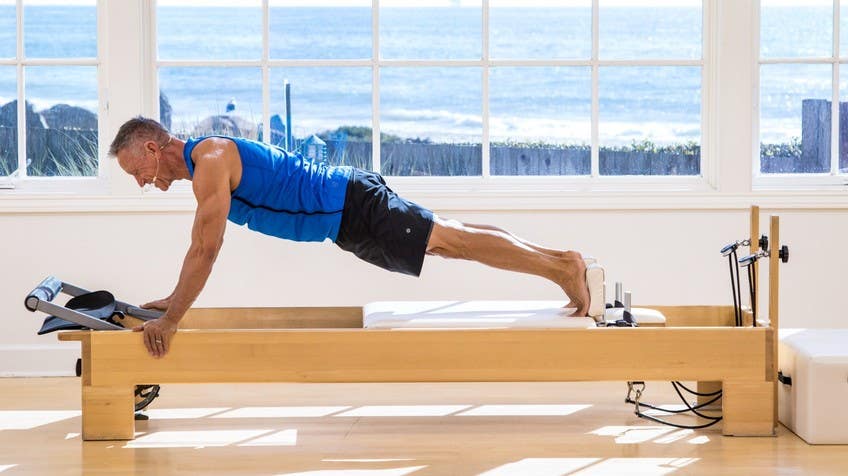
The Reformer (Pilates Reformer, Pilates Machine, Pilates Bed, Pilates Table)
The most common piece first piece of equipment Jospeh Pilates invented, the Reformer, features an elevated bed-like frame, either made from metal or wood (or a mix), that houses a gliding, cushioned platform called a carriage. Moved by the Pilates practitioner by way of a pulley system, the carriage moves along smooth rails.
On the other end, the carriage is attached to a set of springs that deliver resistance that can be customized to accommodate any level of fitness and expertise. The Reformer also features a footbar at that end. Adjustable shoulder blocks, headrest, and pulley angles are modern standards. The Sitting Box is used to the position of the user on the carriage and allow for supine positions.
Revered for its incredible versatility, the Reformer allowing for a vast variety of exercises in all body positions (i.e., lying down, sitting, kneeling, standing). The most recently added accessory is the jump board, which allows now for more cardio-oriented exercises.
The Cadillac (a.k.a. Trapeze Table, Full-Trapeze)
Aptly named after the car company, the Pilates Cadillac is considered the ultimate apparatus. It looks like a canopy bed, with a four-post metal frame and a cushioned mat. At one end, there’s the push-through bar, which can be loaded with springs. Arm and leg springs of different lengths and strength, as well as a roll-down bar, can be hooked up to the opposite end of the Cadillac's metal frame. A slider bar at the top of the canopy houses the trapeze bar, which accommodates everything from those cool acrobatic movements for advanced students to supported stretching for more fragile clients.
Wunda Chair (Pilates Chair, Stability Chair)
Don’t let the name fool you; there's no just sitting around in this chair! One of the most challenging pieces of Pilates equipment around, the traditional Wunda Chair features a cushioned “seat” - a small base with little support - and a pedal that can be spring-loaded. Modern versions of the Pilates chair versions might feature adjustable handles to help with stability and add new exercises. The most advanced models, might even feature a whole array of additional accessory to further broaden the range of exercises.
The Pilates Tower (...aka Wall Unit)
Fusing elements from the Reformer, Cadillac and mat, it’s no surprise that group classes that include the Tower have been rising in popularity. This piece of equipment can either be wall-mounted and used with a mat, or attached to the head of a Pilates Reformer.
High Chair
Think of the High Chair as the Wunda’s taller cousin. It offers more support, thanks to a high back and handles (that may or may not be removable).
Arm Chair (Baby Chair)
Like the High Chair, the Arm Chair has back support. But instead of a pedal, it features springs at about shoulder level. The Arm Chair is great for beginners, since it helps teach proper engagement of the powerhouse. Here's a great "instruction manual." for the "Baby Chair."
Famed Pilates instructor Rael Isacowitz developed this more evolved combination of the arm chair and barrel set for BASI Systems.
The Barrels (Ladder Barrel, Pilates Arch, Spine Corrector)
This group of Pilates equipment includes the Ladder Barrel, the largest of the barrels that are connected to a ladder. the Spine Corrector and the Small Barrels and Arches are movable to use either on a mat or Cadillac. Designed to provide support for the spine against gravity, the Barrels are great tools for promoting breath capacity, flexibility and better posture. Fun fact: Pilates legend has it that they were inspired by kegs of beer!
The Guillotine
Although less common in more modern times, the Guillotine—which is a tower-like frame (either mounted to the ceiling or freestanding) over a mat—was a fixture in Joe’s studio back in the day. Its vertical nature makes it especially effective for clients looking to increase stability, flexibility and spinal/pelvic articulation.
Ped-O-Pull
This often-overlooked apparatus brings the work to a vertical plane, challenging the body against gravity while in a standing position. The Ped-o-Pull is essentially a spring-loaded T-shaped pole attached to a small, square base, with or without a seat.
Where to Buy Pilates Equipment
Now you know the ABC's of Pilates equipment, give each one a go. You're sure to find a new favorite way to move. At Luxusfit, you can find a wide variety of the highest-quality Pilates equipment brands today. Now that you know more about each apparatus, look around to explore the different brands and models.
Our passionate team of fitness equipment experts is looking forward to help you create the sophisticated, exciting, or relaxing environment you envision for your most treasured space - your home.
PLEASE REACH OUT TO OUR PRODUCT EXPERTS FOR ASSISTANCE:
Emails: concierge@luxusfit.com
Calls / Texts: 302-446-3962





